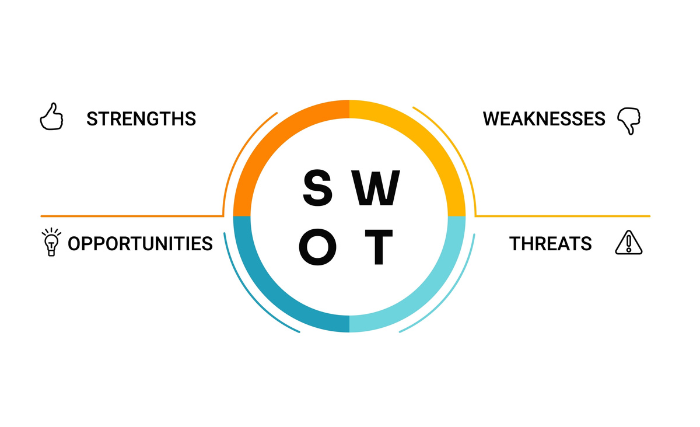
When it comes to business planning, choosing the best strategic model can be the difference between steering towards success or just treading water. It doesn’t matter whether you’re revisiting your business plan or starting a new one from scratch; getting to grips with and applying the right frameworks can help you craft a strategy that’s both robust and adaptable.
Here, I’ll be discussing some of the essential strategic models for UK business, including SWOT analysis, Porter’s Five Forces, and the BCG Matrix.
SWOT Analysis
As some readers will know, SWOT stands for strengths, weaknesses, opportunities, and threats. It’s potentially one of the most widely used strategic tools, and it is not without good reason. It’s simple but powerful and gives you a comprehensive look at your business’s internal pros and cons, as well as a chance to analyse what’s going on beyond your company’s front door.
With SWOT analysis, the devil is in the detail.
In my experience, the key to leveraging SWOT analysis effectively lies in the quality of the insights you can gather. It’s all too easy to list strengths like ‘strong brand recognition’ or ‘skilled workforce’ – the real value comes when you dig a bit deeper.
For example, identifying that a key strength is your company’s agile decision-making process lets you explore opportunities that require rapid adaptation to market changes.
SWOT’s simplicity is a strength.
This is unarguable, but it requires honest and thoughtful introspection and a willingness to confront uncomfortable truths. Understanding your weaknesses isn’t just about acknowledging them. You’ve got to recognise how your weaknesses can impact your strategy.
Let’s say you’re experiencing high employee turnover. Here, the threat goes beyond recruitment costs – it could also bleed into customer service and brand reputation. Figuring out what this means for your long-term business plan is vital for sustained success.


